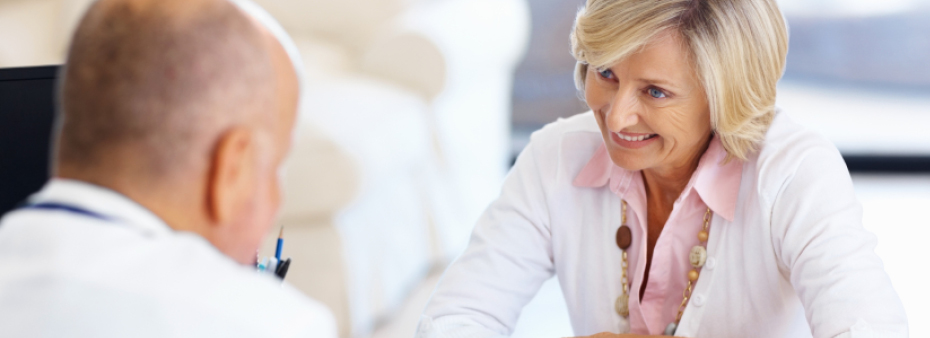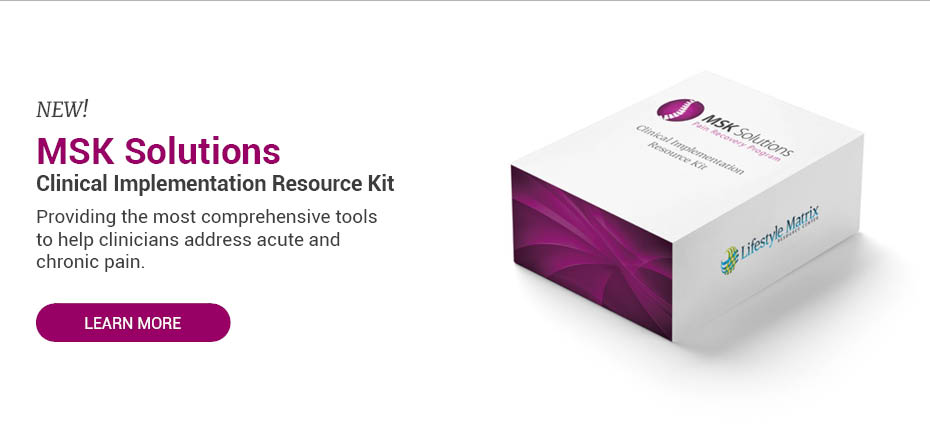If patients are experiencing low back pain, they’re not alone. About 80% of adults experience low back pain at some point in their lifetimes, and it is one of the most common reasons patients seek out medical care. Most causes of low back pain are not acute broken bones or traumatic accidents, but subacute/overuse injuries in which increased mechanical stress accumulates and degenerates body tissues over time, resulting in tissue failure. Any injury, whether categorized as a micro or macrotrauma, results in biomechanical dysfunction and is commonly characterized by both pain and inflammation.
The most common treatment for low back pain is either over-the-counter or prescription medication.1 While this may be appropriate in the short-term, there is an associated risk with continually relying on symptom relief. Aside from the side effects listed for the medication, the unlisted risks are decreased tissue healing, prolonged inflammation, pill dependency, and pain recurrence. The Pain Trap illustration below demonstrates the cycle of pain that so many patients find themselves trapped in.
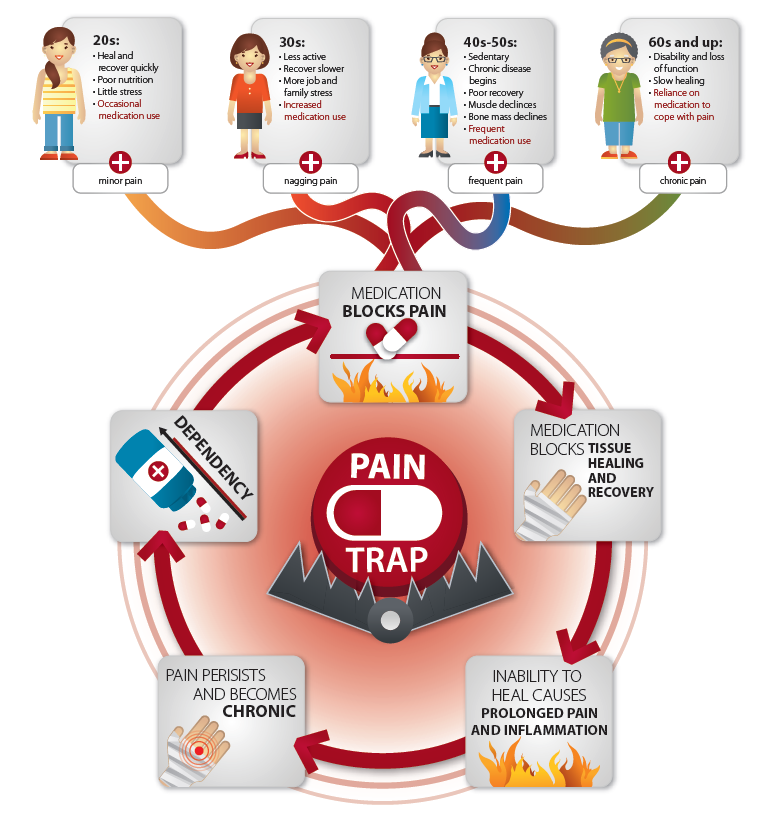
The goal is not to deprive patients of medications that may provide temporary relief, but to help them understand that these medications should never be used as an excuse to avoid the pursuit of true healing. Healing is a complex process that requires proper inflammatory control, new tissue formation, and tissue remodeling to occur within a specific time frame to get back to full function. In some cases, all three phases of the healing process may take 12 to 18 months to be fully completed.
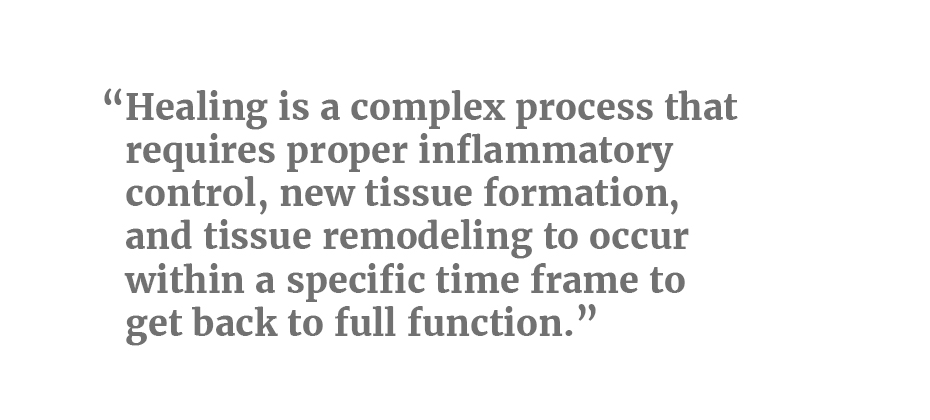
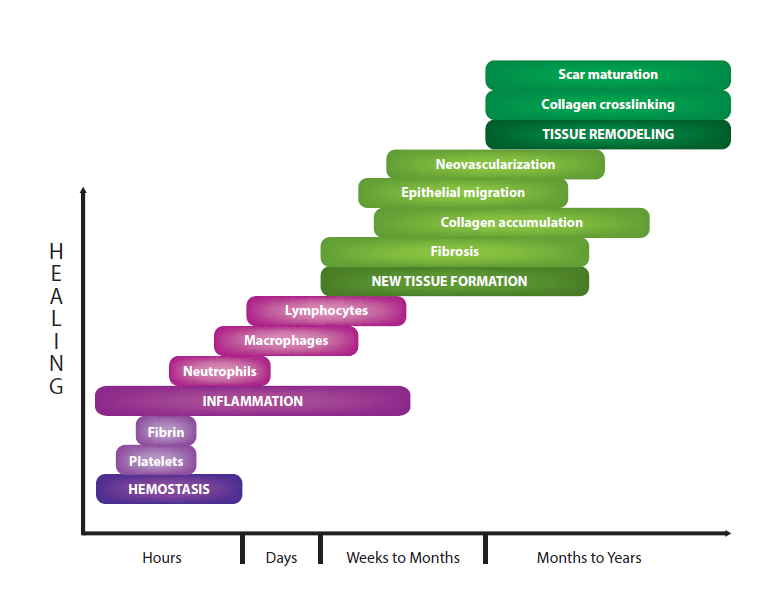
During each phase of the healing process, a different nutritional protocol should be applied to meet the specific tissue needs. During the inflammatory phase, reducing pain and inflammation and enhancing the removal of cellular debris is key. Proper resolution of the inflammatory stage is critical to initiate the phases of repair and regeneration successfully. Curcumin has been shown in clinical trials to reduce hs-CRP and has a pleotropic analgesic and anti-inflammatory effect by not only dampening the activity of COX-2 and 5-LOX enzymes, but also decreasing the activation transcription factor, NF-kB, known as the “master switch” of inflammation. Proteolytic enzymes, such as bromelain, have also been shown to decrease swelling and bruising in clinical studies, as well as reduce scar tissue formation in vitro.2-4
During connective tissue regeneration and repair, fibroblasts begin to produce type III collagen, which is randomly orientated, immature, and weak in comparison to the well-organized, dense fibers of type I collagen. Depending on the structure, type II collagen and extracellular matrix material like hyaluronic acid and other polysaccharides help to aggregate, organize and allow proper structure movement to occur. Clinical studies on raw materials such as bioactive collagen peptides, type I collagen, hyaluronic acid and essential cofactors for collagen formation have shown they not only reduce rehabilitation time, but also endogenously stimulate chondrocytes, fibroblasts and synovial cells to produce their native raw materials. In addition, these studies also show reduced cytokines such as IL-1?, which stimulate a class of connective tissue-degrading enzymes called matrix metalloproteinases (MMPs). Structural support and inflammatory support are essential to reduce the rate of re-injury.5-7
The remodeling phase requires gradual collagen and connective tissue cross-linking, which is dependent on the vital cofactor vitamin C. Vitamin C activates hydroxylases, allowing proper collagen fiber assembly and helical structure formation to occur. If connective tissue alignment and aggregation is limited, collagen fiber orientation remains disorganized and overall function remains limited. This area will likely be a site of reinjury, and vitamin C plays a key role in preventing this.
Once the tissue is healed, the goal is to maintain the quality of life of the patient and prevent reinjury. The goal for every clinician should be wellness. To keep our patients well, we need to teach them how to maintain proper strength, flexibility and biomechanics. An anti-inflammatory lifestyle paired with building metabolic reserve will give the body a slight surplus of nutrient supply that can be used to quickly bounce back, a physiological resilience. Start by recommending a high-quality fish oil, probiotic, vitamin D, magnesium and multivitamin. It’s a simple yet profound way to help your patients stay well and enhance the healing capacity of the body.
1 https://www.ninds.nih.gov/Disorders/Patient-Caregiver-Education/Fact-Sheets/Low-Back-Pain-Fact-Sheet#3102_7
2 https://onlinelibrary.wiley.com/doi/abs/10.1002/ptr.5045
3 https://www.ncbi.nlm.nih.gov/pubmed/24755847
4 https://www.ncbi.nlm.nih.gov/pubmed/17332159
5 Iwai K, Hasegawa T, Taguchi Y, Morimatsu F, Sato K, Nakamura Y, Higashi A, Kido Y, Nakabo Y, Ohtsuki K, 2005. Identification of food-derived collagen peptides in human blood after oral ingestion of gelatin hydrolysates. J Agric Food Chem, 53, 6531-6536.
6 Oesser S, Adam M, Babel W, Seifert J, 1999. Oral administration of (14) C labeled gelatin hydrolysate leads to an accumulation of radioactivity in cartilage of mice (C57/BL). JNutr, 129, 1891-1895.
7 P. Lundquist, P. Artursson . Oral Absorption of peptides and nanoparticles across the human intestine. Advanced Drug Delivery Reviews 106 (2016) 256–276

About Adrian den Boer DC, ND
Educated in both the Netherlands and the United States, Dr. Adrian den Boer is a board-certified and licensed Naturopathic and Chiropractic physician. In addition, Dr. den Boer is fully certified as a functional medicine doctor. Dr. den Boer has treated over 10,000 patients successfully by utilizing multiple resources to manage patient care. Most recently, he joined the Lifestyle Matrix Resource Center as the Clinical Expert serving the MSK Solutions Pain Recovery Program.

